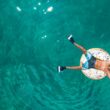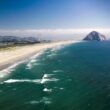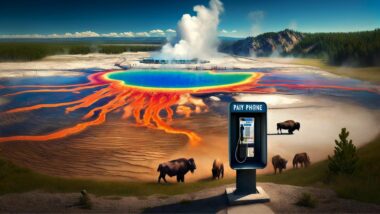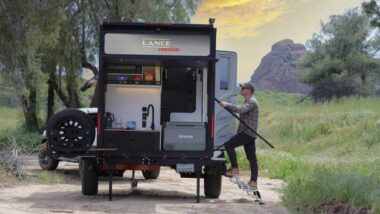Table of Contents Show
If you’re a national park enthusiast, you love visiting the western U.S. There’s the Grand Canyon, Utah’s Mighty Five, the Rockies, Yosemite, and Yellowstone, to name a few.
However, situated in a small section of southwestern Oregon, another national park is well worth visiting.
Crater Lake National Park welcomes only about 500,000 people yearly, primarily because of its inaccessibility during the winter. This visitation doesn’t compare to the three, four, and five million people that flock to the more famous western parks.
But we’re here today to explain why you want to put Crater Lake on your destination list the next time you travel in northern California or the Pacific Northwest. Let’s dive in!
Where Is Crater Lake National Park?
Crater Lake, the deepest lake in the U.S., is located between Bend and Klamath Falls in Oregon. The national park sits west of Highway 97, which connects these two cities. Bend is about 90 minutes northeast, and Klamath Falls is about 45 minutes southwest.
I-5 runs parallel to Highway 97, west of Crater Lake National Park. Eugene, Oregon, is slightly over two hours northwest of the park, just off I-5.
If you’re traveling from Lassen Volcanic National Park in northern California, it’s about a 3.5-hour drive to Crater Lake.
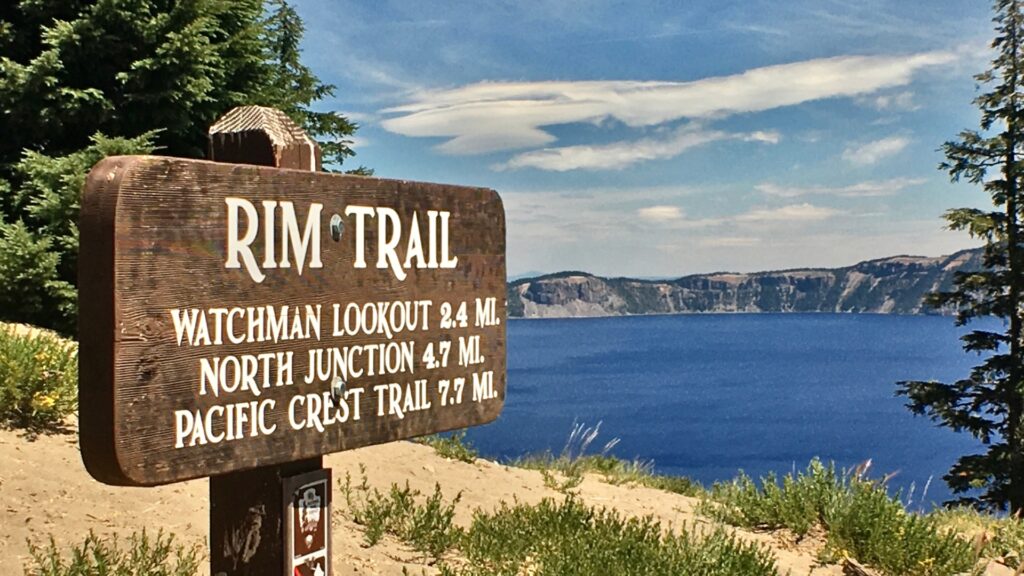
When Did Crater Lake National Park Become A National Park?
Crater Lake was one of the first national parks in the U.S. It followed Yellowstone, Yosemite, Sequoia, and Mount Ranier, becoming the fifth national park in 1902. William Gladstone Steel played a critical role in getting Crater Lake protected by the federal government.
While sheepherders and those with mining interests argued against its establishment as a national park, Steel continued working diligently to preserve this pristine lake. It was first protected as part of the Cascade Range Forest Reserve in 1893 and later named a national park by President Theodore Roosevelt.
Pro Tip: You won’t want to miss this article, Ranked: These Are the Best National Parks in the USA.
What’s So Special About Crater Lake National Park?
The national forests and mountains of southwestern Oregon surround Crater Lake National Park. The park protects these scenic landscapes, volcanic features, and the unique cultural heritage of this place.
A stratovolcano called Mount Mazama formed about 400,000 years ago. It once rose 12,000 feet. But a series of eruptions 7,700 years ago caused the inward collapse of this giant volcano, which left the spectacular caldera we see today.
Crater Lake sits in this caldera and is the deepest lake in the U.S. at 1,943 feet. Although Mount Mazama is currently dormant, future eruptions are still highly possible.
Native Americans have lived in this region for thousands of years and witnessed this cataclysmic collapse. Researchers have found artifacts buried in ash, dust, and pumice layers. This place was sacred to these early tribes, so the Klamath Indians won’t even look at Crater Lake today for fear of death. The national park tells the stories of these early inhibitors of the land and their beliefs about this holy place.
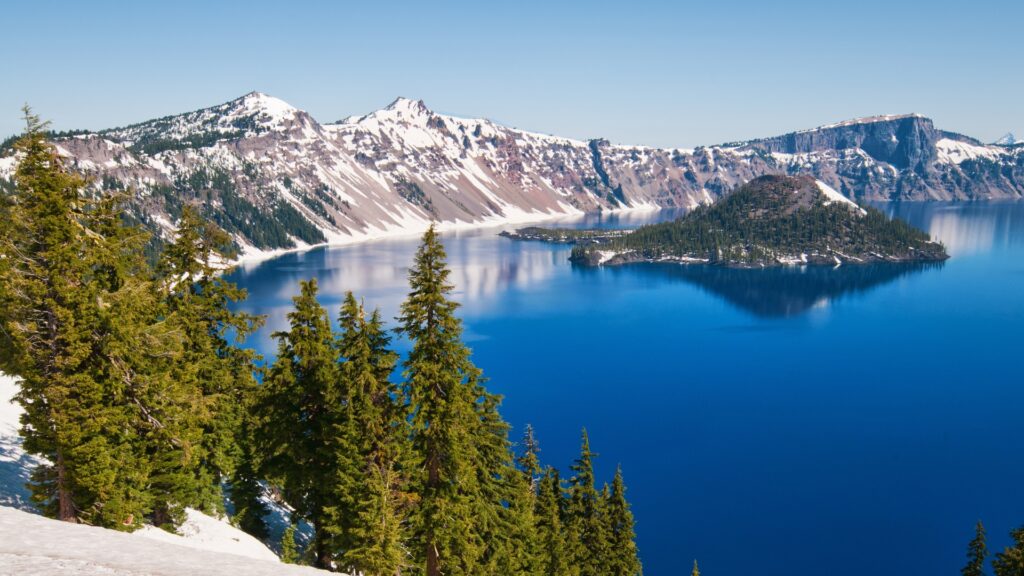
3 Most Popular Attractions In Crater Lake National Park
When you visit Crater Lake National Park, seeing the lake is your priority. It’s undoubtedly the top attraction. But we suggest three different ways to view this stunning landscape. Let’s learn more!
1. Tour Rim Drive
Rim Drive takes visitors through 33 miles of Crater Lake National Park. It offers spectacular lake views and panoramic vistas. There are 30 overlooks with plenty of parking to allow visitors to get out, take photos, and enjoy the scenery.
The speed limit is 35 miles per hour because the narrow road is winding with no guardrails. Traffic goes both directions, and bicyclists also use the road. The road is closed during the winter due to heavy snowfall and reopens in stages beginning in May.
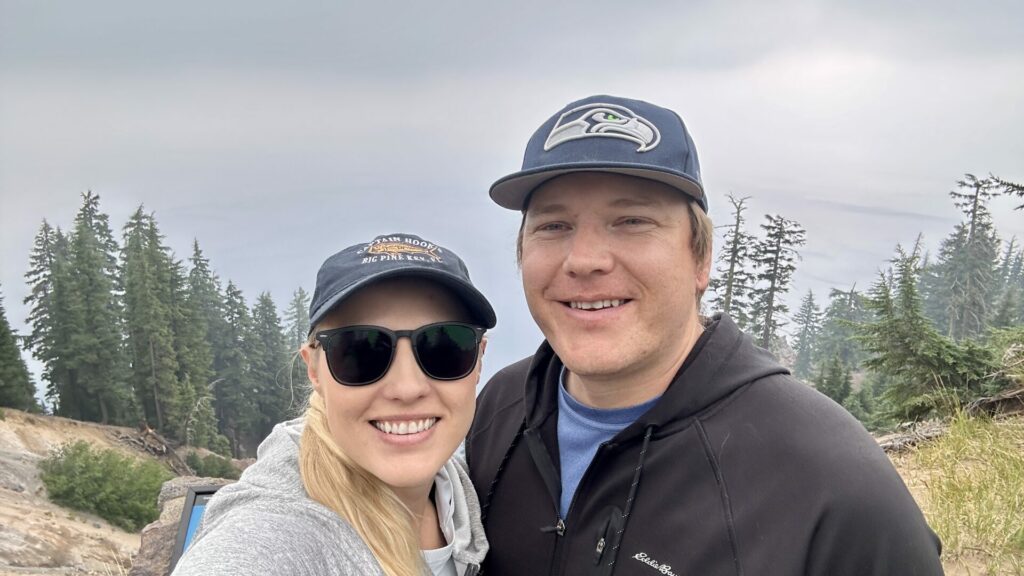
2. Hike the Cleetwood Cove Trail
The only legal way to access Crater Lake is the Cleetwood Cove Trail. It’s open from mid-June to late October. Although it’s the only trail down to the lake, it’s not easy.
The Cleetwood Cove Trail is steep and strenuous, dropping 700 feet in a little over a mile. There are many switchbacks, and the surface is crushed pumice, which can be slippery when dry.
However, if you can manage the trail, it’s worth it. Swimming is permitted here, although the water temperature is still chilly, even in summer.
Guests cannot bring scuba gear, kayaks, rafts, life jackets, or other equipment. You’re only permitted to enter the lake in a swimsuit to decrease the possibility of introducing invasive species.
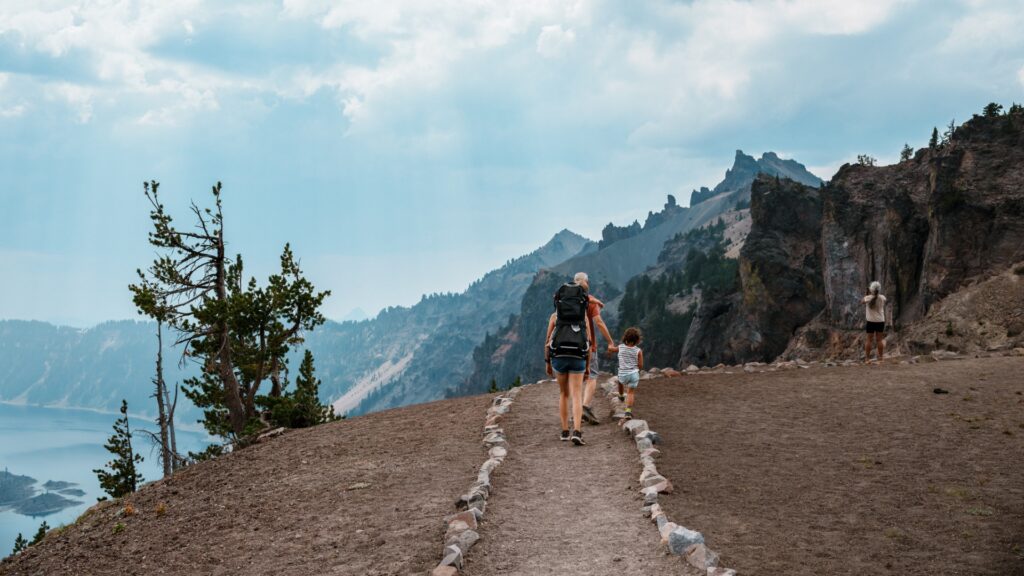
3. Take A Boat Tour To Wizard Island
Crater Lake Hospitality offers boat tours to Wizard Island, a 763-foot cinder cone. It’s one of the most popular destinations in the park.
Guests tour the lake’s perimeter and spend three hours on the island. You can hike to the summit, fish, swim, or enjoy the panoramic views. The Wizard Island Summit Trail leads to the island’s top, where you’ll see the 90-foot-deep crater. It’s a moderate climb and 2.2 miles round trip.
These boat tours require tickets in addition to the entrance fee to Crater Lake National Park. Adult tickets are $55, and child tickets are $37. Children aged two and under aren’t allowed on the boat tour.
You also have to hike the Cleetwood Cove Trail to reach the dock. Keep this in mind if you’re unable to complete that strenuous hike.
Another way to experience the majesty of Crater Lake National Park is fishing in these pristine blue waters. Between 1888 and 1941, the lake was stocked with seven different fish species.
However, only the Kokanee salmon and rainbow trout remain today. Bull trout live in Sun Creek and Lost Creek, and fishing isn’t permitted here to protect this threatened species.
No fishing license is required if you remain within the park’s boundaries. To fish in Crater Lake, you must hike the Cleetwood Cove Trail. You can also fish any creeks besides Sun Creek and Lost Creek. Most of these creeks are on U.S. Forest Service land, so you’ll want to grab a map at one of the district offices.
Anglers must use artificial lures to prevent the introduction of non-native organisms into the lake and streams. You cannot wear waders or a wetsuit, and no boats are allowed. Not like you could get a boat down Cleetwood Cove Trail anyway.
You can catch as many rainbow trout and Kokanee salmon from the lake as you’d like, as well as brook trout and brown trout from streams.
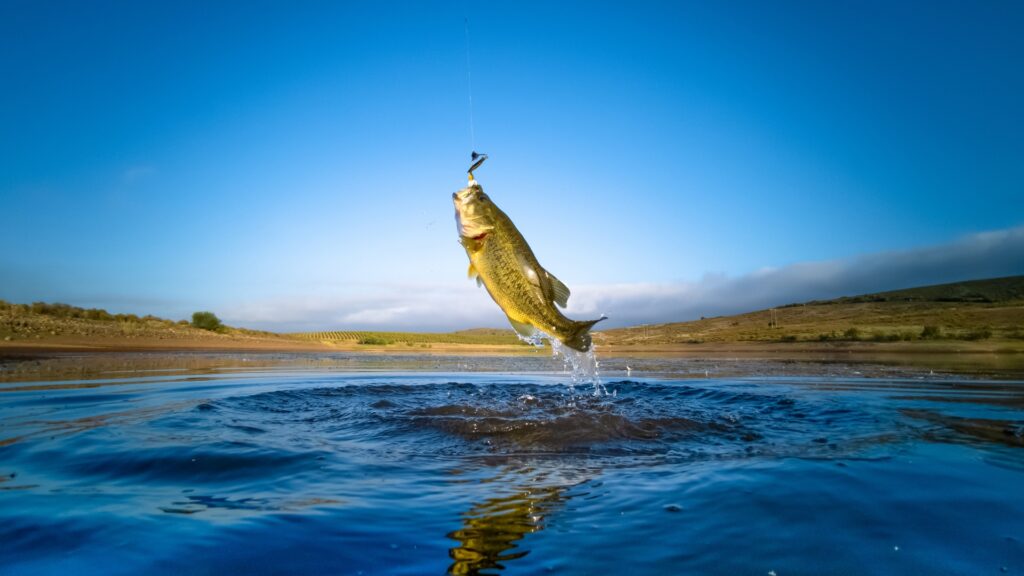
Best Place For Camping Near Crater Lake National Park
Mazama Campground is the best place to camp in the park. It’s only open during the summer and provides 214 sites with picnic tables, fire rings, and bear-resistant food lockers. Sites with full, partial, and no hookups are available and range from $31-42 per night. RVs of all sizes are permitted.
Backcountry camping is also allowed in Crater Lake National Park. A backcountry camping permit is required for all overnight trips and can be purchased at the Ranger Station at the Park Headquarters. Permits are free.
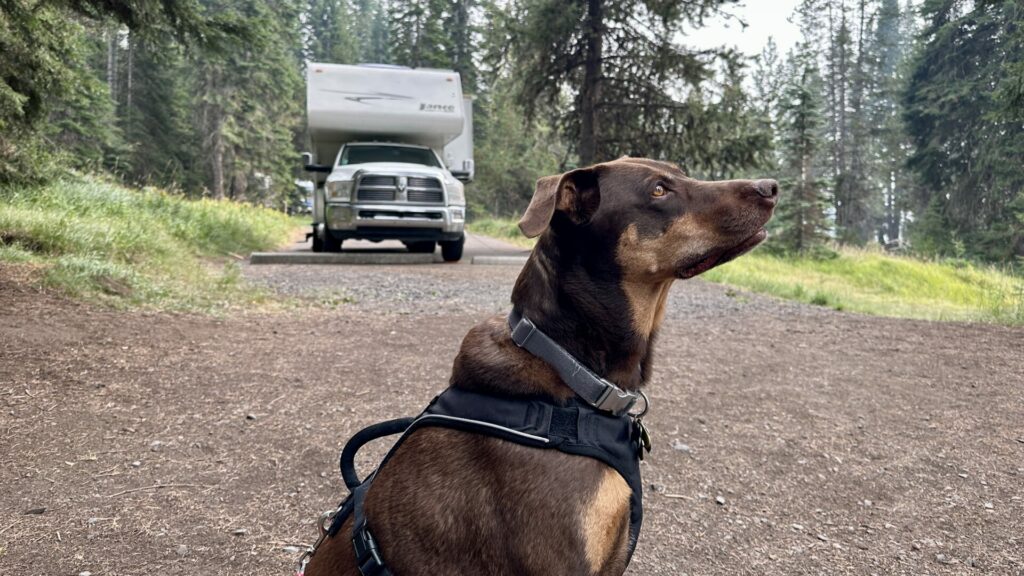
Is Visiting Crater Lake National Park Worth It?
Crater Lake is one of the most beautiful lakes in the world, not just in the U.S. It’s considered one of the cleanest, most pristine lakes because no rivers or streams empty into it.
Only water from rain and snow fills the lake, so there’s minimal sediment or pollutants. When you see the lake for the first time, with its magical blue waters, it takes your breath away.
So Crater Lake National Park is worth a visit. If you can’t hike the Cleetwood Cove Trail to see the lake up close or take a boat tour of the lake itself, you can still witness the grandeur of this place by driving Rim Drive.
Pack a picnic, bring your binoculars, and set aside a few hours to enjoy the breathtaking scenery.
Have you ever been to Crater Lake National Park?
